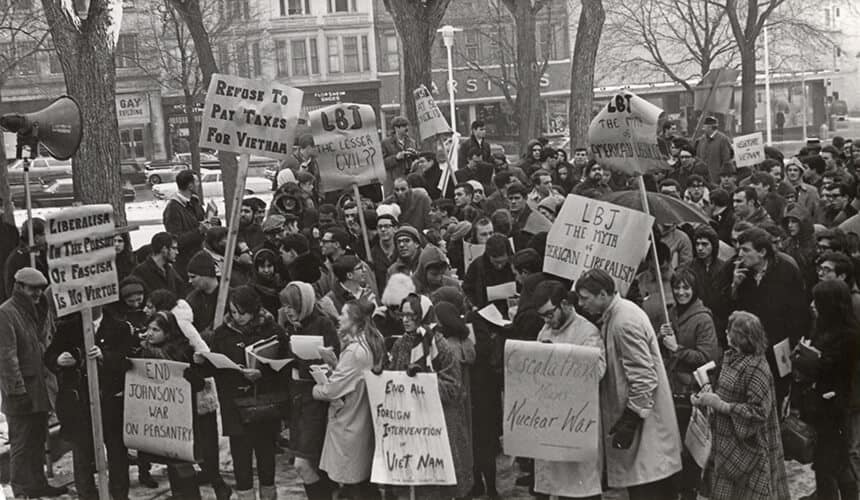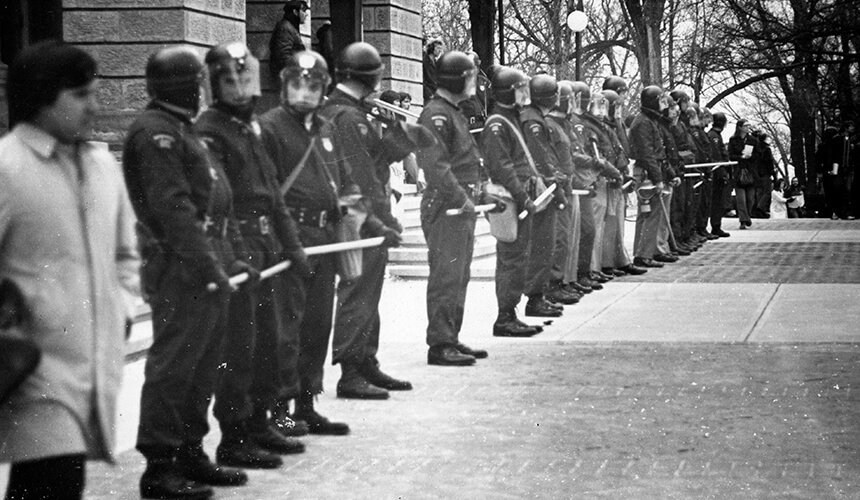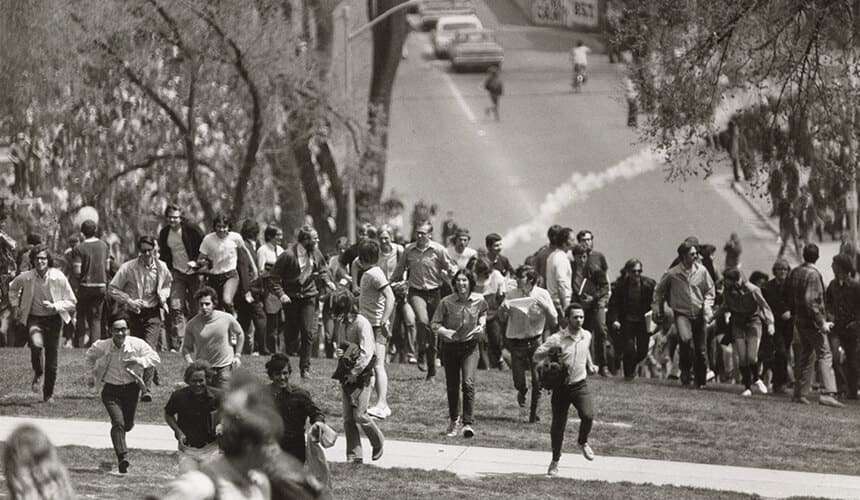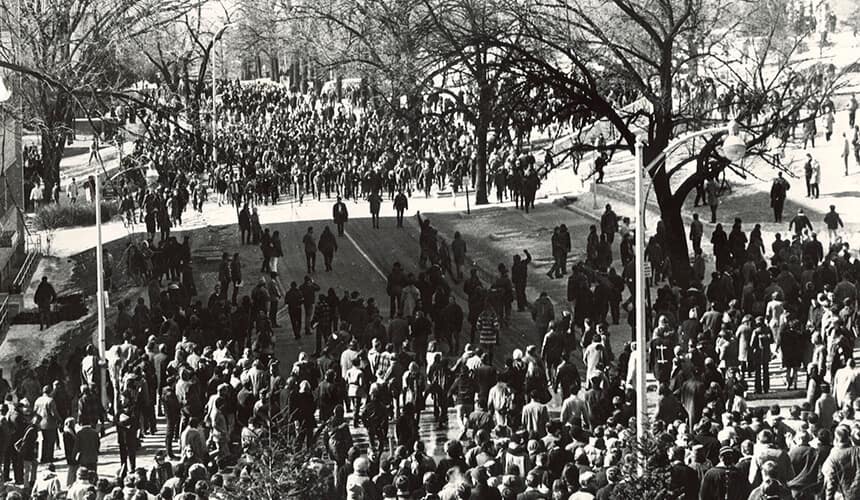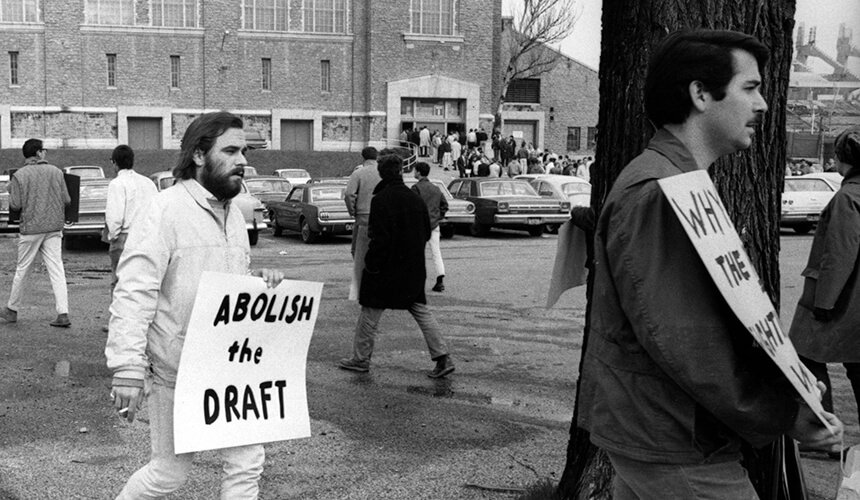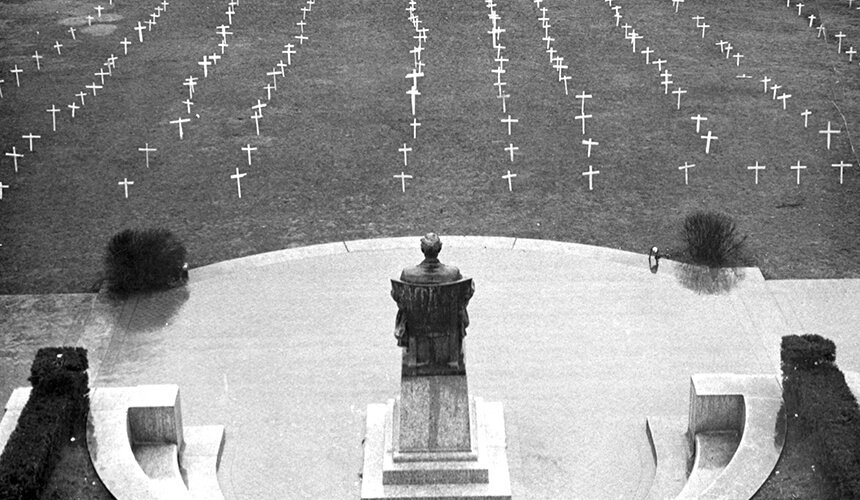Students for a Democratic Society
Campus Activism
The nation experienced a great divide in the 1960s and early 1970s, and college campuses were often at the epicenter of discontent.
Students became involved with civil rights activities, joining the Freedom Riders in the South and traveling to the March on Washington in August 1963. When the United States became involved in the war in Vietnam in 1965, a perfect storm began brewing — and a generation of young people started to influence politics and society as never before.
At the UW, exploration of the Vietnam conflict began calmly with a teach-in in April 1965. But as the war escalated, so did activities on campus, with Students for a Democratic Society (SDS) — one of the most visible activist organizations — leading a protest against Dow Chemical’s campus recruitment efforts in February 1967. That October, a more intense protest against Dow, which had a contract with the U.S. government to manufacture napalm, ended with injuries to both protestors and police, and demonstrators called for a student strike.
Several years earlier, SDS had adopted a formal statement in which the organization’s leaders identified universities as the “central institution for organizing, evaluating, and transmitting knowledge.” As a climate of idea exchange, campuses became ideal settings for establishing the New Left, a movement committed to achieving a broad range of societal reforms.
UW–Madison was no exception. Students took on a number of causes throughout the late ’60s and early ’70s. In February 1969, the Black Peoples Alliance organized a strike, demanding a black studies department and increased recruitment of minority students; the governor called out the National Guard to keep campus open. Protests began anew when the government announced a draft lottery in December 1969. The following year, the Teaching Assistants’ Association called a strike over collective-bargaining issues. When students were killed during antiwar protests at Kent State, the UW campus erupted with outrage. The National Guard returned, this time using tear gas to disperse crowds. UW students joined campuses across the country to participate in a strike.
August 24, 1970, marked a turning point in the antiwar movement. In an attempt to destroy the Army Mathematics Research Center, four men bombed the UW’s Sterling Hall, killing physics postdoctoral fellow Robert Fassnacht, who was working late.
Some regard that moment as the beginning of the end of the era’s intense student activism. Years later, Patrick Quinn BS1964, a former SDS member, wrote, “The political atmosphere in Madison in the fall of 1971 was like being in a morgue. The electricity that had filled the air in 1968, 1969, and 1970 had dissipated.”
 34° F
34° F